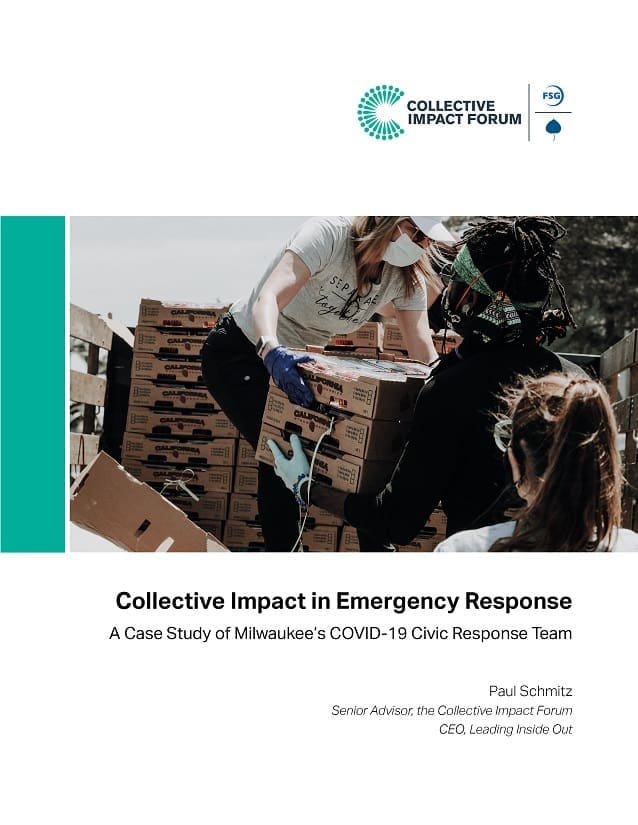Milwaukee’s COVID-19 response has been a remarkable mobilization of resources and organizations to address needs for shelter, food, testing, Internet connection, and more. Necessity has forced such collective efforts in many cities, but Milwaukee’s may be unique in the civic architecture that has been built and that may be sustained beyond the crisis.
The experience in Milwaukee provides a window into a city’s comprehensive response to the COVID-19 crisis that also offers six lessons for how collective impact initiatives can be most effective in both meeting emergency needs and pursuing systems changes.
Top Takeaways
- Collective impact is a useful approach for organizing and aligning a community during an emergency, especially when there is a solid foundation of relationships and skills.
- Effective partners center themselves on equity and community need rather than their organizations’ interests, and the sense of urgency bypasses the petty.
- Funders and government closely collaborate with each other and with providers, and use their role beyond dollars to advance the common agenda.
Ian Bautista, Senior Director for Civic Engagement, Greater Milwaukee Foundation

